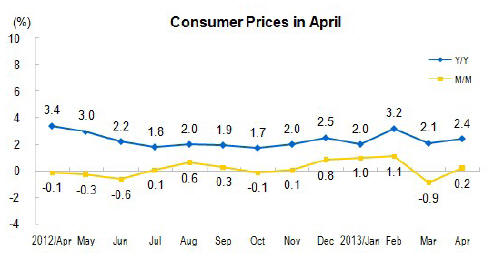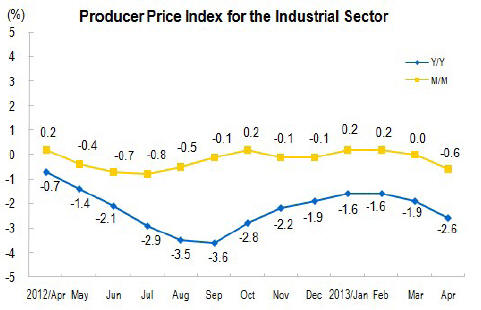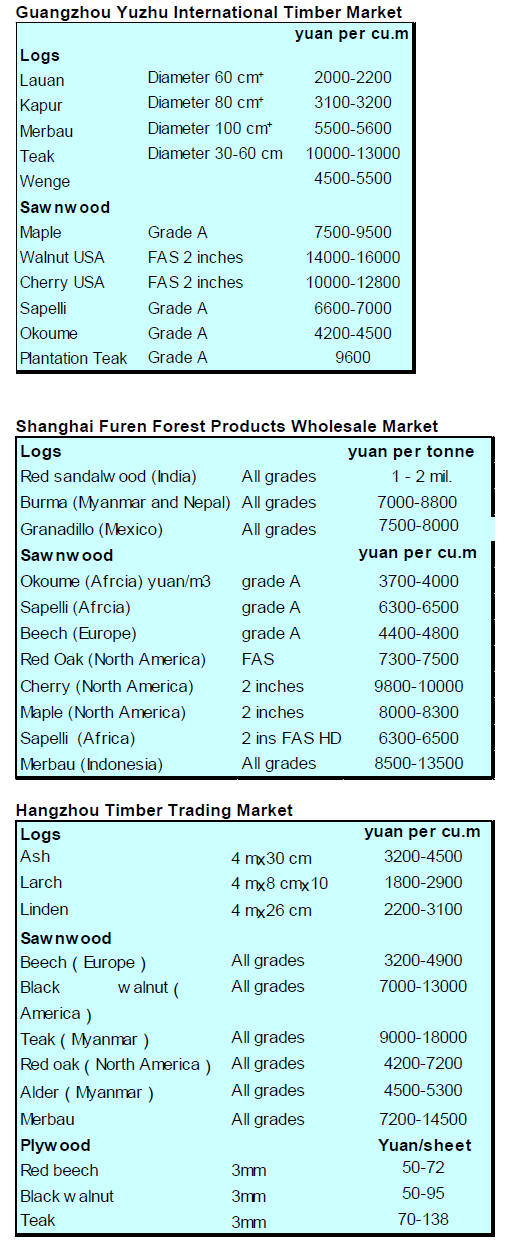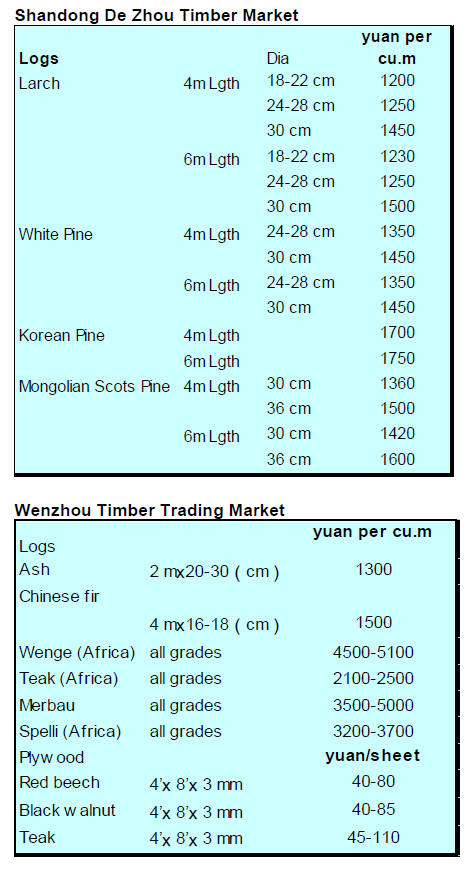US Dollar Exchange Rates of 10th
May 2013
China Yuan 6.1395
Report from China
Addressing unbalanced, uncoordinated and unsustainable
international trade
Led by the Ministry of Commerce, efforts are being made to address the
country¡¯s trade imbalance. More than ten ministries and commissions such
as the National Reform Commission, Ministry of Finance and Ministry of
Commerce have jointly prepared plans to accelerate imports and thus
transform the structure of China¡¯s foreign trade growth.
A spokesperson from the Ministry of Commerce said import procedures will
be streamlined to facilitate growth.
Specific measures mentioned to transform the trade flow include
adjustments to the tariff structure, strengthening the range of
information services and increasing transparency and coordination
between the private sector and government agencies.
China's foreign trade has grown robustly over the past 10 years and the
country has established itself as a major trading nation but still, say
analysts, quality and industrial efficiency continue to be a problem.
While foreign trade makes an important contribution to China's economic
and social development this trade is unbalanced, uncoordinated and
unsustainable, hence the initiative of the Ministry of Commerce.
Strengthening imports is one means to realise a balanced trade.
The role of foreign trade in China is seen as a means to promote
economic growth, enhance social harmony, and expand international
influence.
The current development model for China's foreign trade which relies on
low cost resources such as energy and labour is considered
unsustainable. Efforts will be made to adapt the economic development
pattern through a transformation of international trade.
The Ministry of Commerce has recognised that the competitiveness of
labour intensive industries in developing counties has improved to such
an extent that exporters in such countries can compete very effectively
with Chinese exporters.
The Ministry also notes that international competition is now much more
intense and that trade protectionism is on the rise making the
international trading environment more complex.
It is recognized that China¡¯s core competitiveness is not strong, the
quality, grade and value-added of exports is not high, the capacity of
private sector R & D is weak and designs are generally below
international standards.
The Ministry has said that mere coordination between industry and
government is not enough and that China's foreign trade development
model must be restructured if trade is to continue to drive economic and
social development in the country.
Consumer price index climbs
In its monthly press release the National Bureau of Statistics of China
reports that in April the consumer price index (CPI) increased 2.4
percent year-on-year.
Prices increased by the same amount in both the cities and in rural
areas. Food prices went up by 4.0 percent, while the non-food prices
increased by 1.6 percent.
The prices of consumer goods went up by 2.2 percent and the prices of
services grew by 2.9 percent.

Industrial sector producer prices
In April 2013, the Producer Price Index (PPI) for manufactured goods
fell 2.6 percent year-on-year, and dropped 0.6 percent month-on-month.
Similarly, the purchasing price index for manufactured goods went down
by 2.7 percent year-on-year, and 0.6 percent decrease month-on-month.

Household furniture prices on the rise
The domestic newspaper, China Green Times, recently reported on a
survey of furniture price trends based on visits to home furnishing
stores.
The conclusion of the survey was that prices for household furniture
have increased and are likely to continue upwards as wood raw material
and labour costs increase. Analysts forecast that ex-factory prices for
wooden furniture will increase by around 5% to 10% this year.
Prices for household furniture were found to have increased throughout
2012 and this trend will continue as solid wood products and high class,
precious and rare timber species becoming less available.
According to domestic furniture manufacturers, while prices of locally
made furniture are increasing, prices for imported European and the USA
furniture are not likely to rise significantly.
Raising consumer awareness will expand domestic demand for OSB
The first production line of oriented strand board (OSB) in China was
built in 1985 with annual output of only 10 000 cubic metres. The
national annual output of OSB was around 400 000 cubic meters in 2011.
The annual output of many OSB manufacturers small and can be as low as
20,000 cubic metres. Hubei Baoyuan Wood Industry Co., Ltd is the largest
OSB producer in China with an annual output of 220,000 cubic metres.
OSB is mainly produced from species such as pine, poplar, birch and
willow in the northeast of the country and from poplar in central and
southern China.
It is reported that there are 104 OSB manufacturers in China but the
market for OSB is not well developed for a product which is new to
end-users.
Analysts point out that consumers find it difficult to get adequate
information on the performance of OSB because of a lack of promotion by
manufacturers.
The result of an investigation of OSB manufacturers and end-users
revealed that consumers¡¯ awareness the properties and uses of OSB is
very low.
Less than 20 percent of customers had a good appreciation of the
advantages of OSB reflecting a serious disconnect between manufacturers
and customers.
Excerpts from: "The Oriented Strand Board industry Development in
China". China Wood-based Panel 2012(2):7-10. Yu Baoli.
First quarter furniture shipments through Zhangzhou top US$50 million
In the first quarter of 2013 and for the first time the value of
furniture handled by Zhangzhou ports in Fujian Province exceeded US$50
million, up 10% from the same period in 2012.
Furniture exports from manufacturers located in Fujian Zhangzhou City
account for around 15% of total national furniture exports.
Furniture from the province is mainly exported to the EU and the USA
which together account for around 80% of all shipment. In the first
quarter 2013 the value of furniture exports to the USA was US$27 million
(up 21%) and to the EU exports were worth US16 million, unchanged from
levels from the first quarter in 2012.


¡¡
|